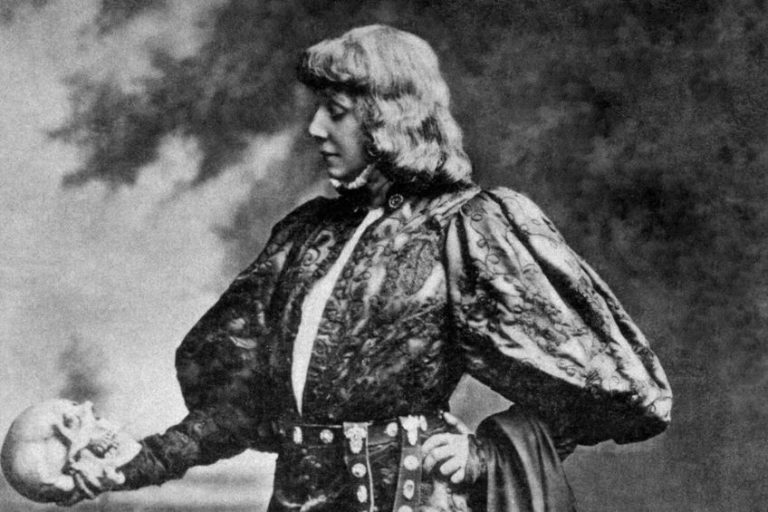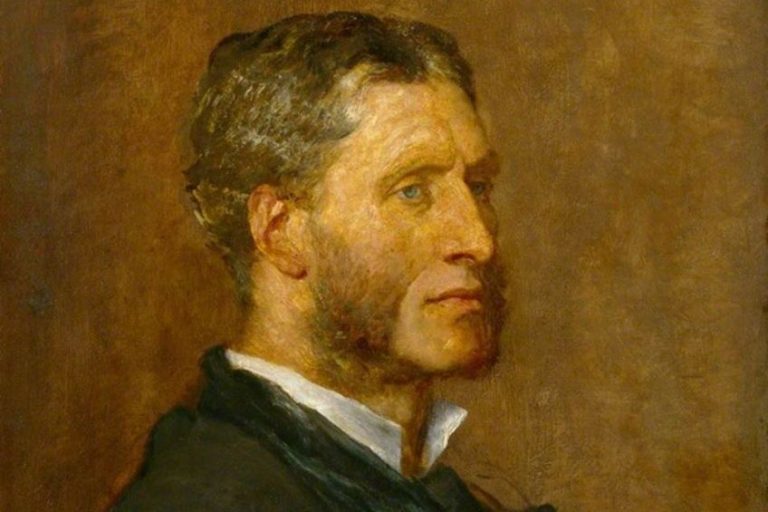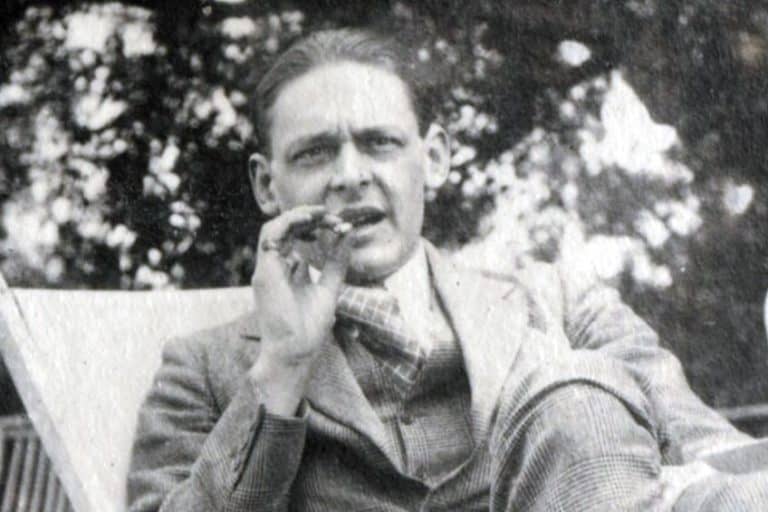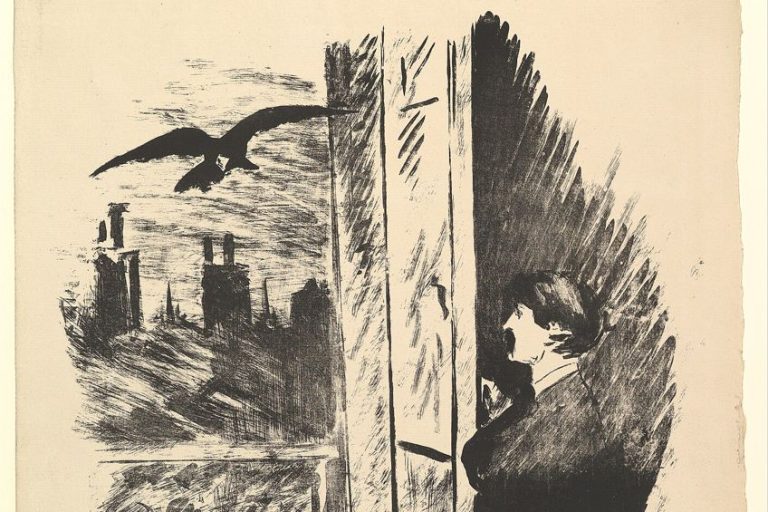“Stopping by Woods On a Snowy Evening” Analysis – A Close Look
Sometimes a writer comes along and their poetry is considered to be so stunning that it captures the hearts of millions. This is the case with Robert Frost. Today, we are not going to be having a look at his most famous poem, as that poem is about two roads that diverge in a wooded area, and that’s been done! Instead, we’ll be looking at another famous Frost poem. In this case, it will be for my Stopping by Woods on a Snowy Evening analysis. This poem, while not as famous as that other poem, is still a fantastic text, and we are going to be spending today breaking it down, examining the man behind the poem, some of the themes the text explores, and more. If this sounds like a poem you would want to see analyzed in some depth, you’ve come to the right place! All we can do now is get things underway.
Stopping by Woods on a Snowy Evening by Robert Frost Analysis
| Date Published | 1923 |
| Type of Poem | Rubaiyat quatrain poem |
| Rhyme Scheme | AABA BBCB CCDC DDDD |
| Meter | Iambic tetrameter |
| Topic | Humans, nature, and obligation |
Today, our focus is going to be on a Stopping by Woods on a Snowy Evening analysis. This is one of Robert Frost’s most famous poems, and it has come to be seen as one of the most integral to understanding the full oeuvre of this poet. The poem’s examination of the natural world, time, and solitude has made it a phenomenal text to analyze. However, it can be beneficial to start things out without jumping straight into a full analysis, and for that reason, we’ll first be having a quick look at a summary of the discussion to come.

Stopping by Woods on a Snowy Evening Analysis Summary Points
It can always be beneficial to start things off with a bit of a summary. The reason for this, in my opinion as a prior teacher, is because it gives you preparation for what is to come. If you didn’t want any spoilers for what the text is about, you wouldn’t have come to an in-depth analysis of the text in question, or at least this would appear to be the case. So, here’s your summary:
- Stopping by Woods on a Snowy Evening is a Rubaiyat quatrain poem. This poem’s structure is rather unusual as it is made up of a specific arrangement of rhymes oriented around its quatrain structure. Each quatrain incorporates three lines that rhyme and a single line that does not, but that single line becomes the dominant rhyme for the subsequent stanza. It is a unique structure that is not seen all that often in all that many poems.
- Stopping by Woods on a Snowy Evening was written by Robert Frost. This American poet is usually seen as one of the most important and influential writers who graced the 20th century literary landscape. His work was often focused on rural life in the United States. He would go on to become one of the most celebrated of all American poets while he was still alive, and his poetry is taught all over the English-speaking world.
- Stopping by Woods on a Snowy Evening tells us of the natural world. The poem wants us to see and understand the world that exists outside what humans have created around us. It is a poem that depicts a man journeying through the snowy landscape as he ponders questions of isolation, nature, our obligations to one another, and so on.
While this summary has provided you with a few helpful points to get you started, it’s hardly a full examination. If you do wish to learn more in this Stopping by Woods on a Snowy Evening analysis, you’ll have to get into the next section, which discusses the poet who wrote the poem, and then we’ll get into our proper analysis.
It should be fun, so stick around if you also think it sounds like some fun!
Biography of Robert Frost
| Poetic Movement | American Regionalism |
| Years | 1874 – 1963 |
| Place of Birth | San Francisco, California, United States |
| Known For |
|
A figure like Robert Frost is such an important one in American literature because of his place as a central figure in the development of a particular American voice. He was a writer born in the city, but he soon moved to the countryside, and it was there that he would be influenced by the sights and sounds that would be transcribed into his poetry. His poems are noted for their use of American colloquial speech, more ordinary language usage, and a dedication to the American rural landscape.

The use of the rural world of the United States would prove to be the thing that elevated Frost and turned him into a household name. He wrote poems that were often very frank about the place they explored in the world. His poems were often realistic in what they portrayed, and they were also riddled with literary devices and interesting use of language. This is one of the things that led to Frost’s poems being frequently used in English classes the world over. I have even taught Robert Frost poems back when I was a teacher because that is how pervasive his work is when it comes to English literature as a whole.
Robert Frost may have been influential in terms of his poetry as both literature and educational material, but he was also very much celebrated while he was alive. He would go on to be seen as an American cultural figure, and he won various prizes for his work. For instance, he won Pulitzer Prizes, a Congressional Gold Medal, and even became the Vermont poet laureate. All of these factors came together to elevate him for decades upon decades after his death.
His work is still widely read and fondly remembered to this day.
An In-Depth Stopping by Woods on a Snowy Evening Analysis
Before we dive straight into the line-by-line Stopping by Woods on a Snowy Evening analysis, let’s have a bit of a general chat about this poem. Firstly, it makes use of a rather interesting structure and rhyme scheme. This is known as a Rubaiyat Quatrain poem, which is named after a Rubaʿi poem but is technically distinct from it. This version comes from an 1859 translation by Edward FitzGerald of ancient Persian verses that were published in English as Rubaiyat of Omar Khayyam. Frost’s poem makes use of the kind of rhyme scheme that was exhibited in this translation.
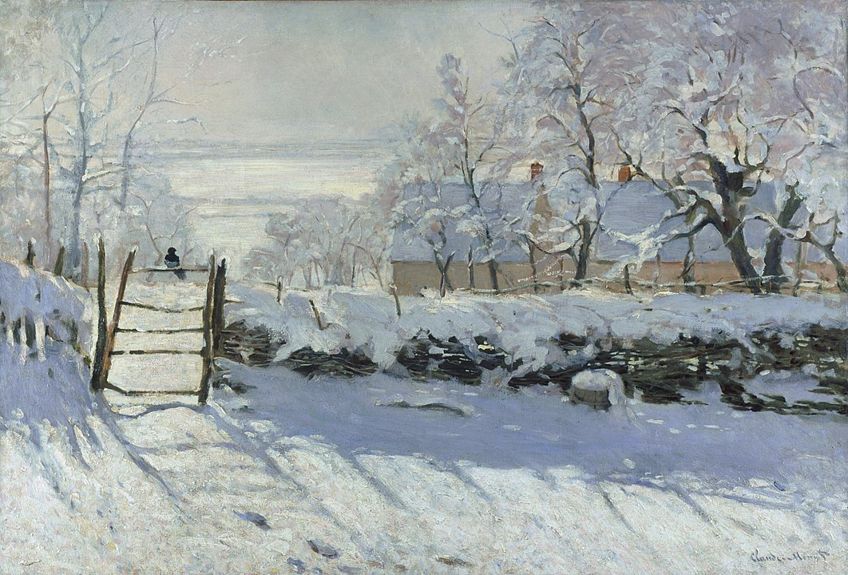
Essentially, this means that the poem is comprised of a quatrain structure in which every one of the stanzas has three lines that rhyme and one line that does not. They are arranged as AABA. However, that one line that does not rhyme forms the bulk of the next stanza’s rhyme while a new unrhymed line is used, like so: BBCB. The final stanza of the poem makes use of a quatrain in which all of the lines rhyme with one another. This very heavy use of rhyme contributes to the poem being a particularly rhythmic form of poetic expression.
On top of that, the poem also makes use of consistent iambic tetrameter. So, it has persistent rhyme, eight syllables per line, and it only has four stanzas. This makes for a relatively short poem at only 16 lines in length. I will be examining each of those stanzas, in turn, to discuss the poem on a more specified level before I proceed with a brief final segment about the overarching meanings and themes that can be found in the poem as a whole.
However, with all of this out of the way, we can proceed with our Stopping by Woods on a Snowy Evening analysis.
Stanza One
Whose woods these are I think I know.
His house is in the village though;
He will not see me stopping here
To watch his woods fill up with snow.
The poem opens with the speaker pondering on the woods themselves. He mentions how the person he is meant to visit lives in the village, and he will not be able to make his way to his friend’s home if he remains in the woods. However, he has come to a halt, and he watches as the “woods fill up with snow”. This image is aided by the persistent alliteration usage in the final pair of lines in the stanza. The use of “see”, “stopping”, and “snow” are used close to one another along with “watch” and “woods”.

We are invited to perceive this image of the woods becoming further laden with snow as he stops and watches. We can already tell from this early portion of the poem that he is not truly meant to stop here. He is meant to visit someone, and when he stops, he even thinks to himself that the one is meant to visit is “in the village though” rather than in the woods.
At this early point, we can see that he knows he cannot stay in the woods forever.
Stanza Two
My little horse must think it queer
To stop without a farmhouse near
Between the woods and frozen lake
The darkest evening of the year.
The second stanza begins with the speaker thinking about his horse. He assumes that his horse is confused by the stop. Horses that are used for riding are generally not those that are necessarily used for leisure. They are used as transportation, and this poem was published early enough in the 20th century that going somewhere by horse was not an unusual thing to do. The second line reinforces the first by simply stating that the horse would find it strange to stop somewhere without a farmhouse of some kind.

The second two lines of the stanza are used to produce an image of the landscape for us. They discuss the position this man is in. He is between the woods and a frozen lake, and we are also told, by the very last line, that this is the darkest night the year has experienced. So, the pair of them have come to a complete halt in the snow as they gaze upon the woods as snow falls all around them.
It is cold and inhospitable, but the speaker has come to a halt because they have thoughts in mind that stop them from proceeding.
Stanza Three
He gives his harness bells a shake
To ask if there is some mistake.
The only other sound’s the sweep
Of easy wind and downy flake.
Similar to the last stanza, the first two lines focus on the horse himself. The horse shakes at the speaker to see if something has happened, if there is an actual reason that they have come to a complete halt that day. The sound of the bells also echoes in the night as the horse gives the rider a shake, and the idea of sounds continues into the second half of this stanza when the rest of the landscape is compared to the sound that comes from those bells.

We are told that there is nothing else in every direction. There are no other sounds that cold night. Instead, we are shown a silent place in the snow. The final line tells us that while everything is frozen over, there are small pieces of snow that fall from above while being caught on an “easy wind”. The image of this snowy stop in the woods is one that is calm, peaceful, and serene. The speaker can hear nothing else around them.
The rest of the world has become silent as nature itself freezes over.
Stanza Four
The woods are lovely, dark and deep,
But I have promises to keep,
And miles to go before I sleep,
And miles to go before I sleep.
The speaker, in the final stanza, states that the woods that snowy evening are indeed beautiful. It is unlike anything else. They are stunning while also being “dark and deep”, but we are then broken from this tranquil image with the word “but”. This slices through the serenity, and the calm and peacefulness of the natural world will have to wait because the speaker has some unknown promise that he must fulfill and so he cannot simply remain in the woods forever. He has to leave to see the person he has to journey to meet, whoever that person happens to be.

The final two lines are direct repetitions of one another. The use of the same line twice adds gravity to the statement that has been made. The speaker expresses to us that there are still many miles of journey ahead of him before he is able to rest. He may wish to be able to rest here, but he has obligations. His obligations are human-made constructs, but those promises override any need for the restful beauty of the natural world. The speaker must resume his journey.
The Themes of Stopping by Woods on a Snowy Evening
Now that we have come to the end of my Stopping by Woods on a Snowy Evening analysis, we can talk about the broader themes on display in this poem. The poem describes a man who has come to a complete halt in the woods and stands mesmerized at what he sees before him. He only sees the natural world, but it is enough to fill him with a certain level of awe that he can no longer proceed onward.
This sense of wonder in the face of the natural world is a potent one, and it provides us with an understanding of humanity’s place within the natural world.
However, the speaker is on a journey, and that journey comes with certain obligations. He is expected to leave those woods and to journey forth. We do not know the kinds of obligations he has that have forced him into this journey, but he is forced to give up his desire to stand silent in the woods and watch the world. He has to fulfill his human obligations.

Ideas surrounding desire and obligation can be seen in the poem alongside this love and adoration for the natural world. These are the kinds of ideas that the poem expresses to us through this image of a simple stop in the middle of a journey. Many of us can relate to and understand a situation like this. Who hasn’t stopped partway through a journey for no real reason and felt the need to keep going even though we wanted to stick around?
The Influence of Stopping by Woods on a Snowy Evening
Some poets have an immense amount of influence that they exert over the literary world during and after their lives, and Robert Frost is one of those poets. While I have provided a Stopping by Woods on a Snowy Evening analysis today, it can also be beneficial to understand how others have taken this poem on board as something that has influenced their own works and thoughts.
One of the principal things that this poem did, in a very tangible sense, was turn Robert Frost into a renowned poet. This poem, along with The Road Not Taken (1916), had an immeasurable effect on how Frost came to be perceived by the public. His work was soon recognized as quintessentially American, and it would remain that way into the present day. These kinds of works have continued to be studied and analyzed into the present day because of their immense quality.
One of the biggest areas in which Stopping by Woods on a Snowy Evening has had an influence is as an educational tool.
It makes use of various literary devices with such stunning ease that it has come to be seen as a phenomenal tool for teaching how to read, write, and interpret poetry. This kind of cultural impact on the educational system has meant that most students who studied the English language have likely been exposed to this text.
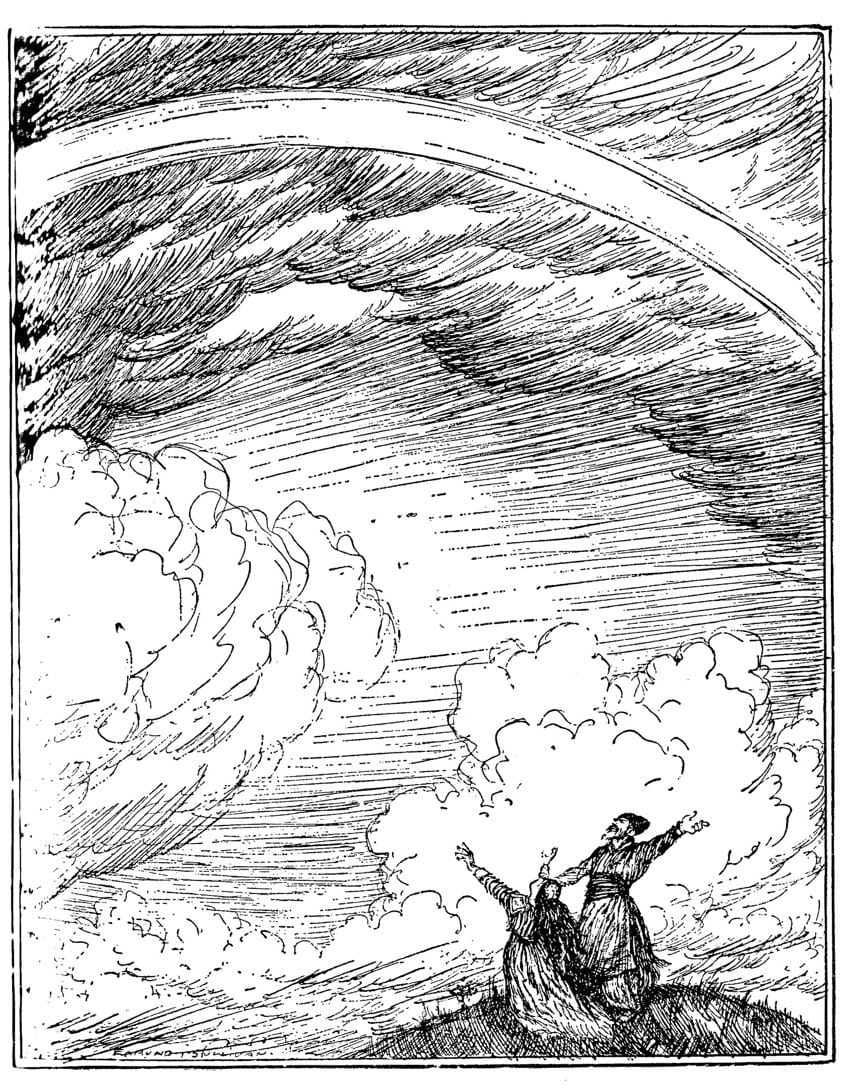
As a bit of a personal anecdote, this poem in particular was studied in great depth in a university module that I marked. I have personally seen hundreds of attempts to analyze this poem with differing levels of depth and understanding. It is a poem full of meaning and devices to explore and understand, and this makes it perfect for reasons that Frost himself may never have expected.
And, of course, because of the fame and pervasiveness of this text, there are elements of Stopping by Woods on a Snowy Evening that can be found in various pop cultural texts, like movies. The final line, “And miles to go before I sleep”, has become particularly prominent. This poem, and many others by Robert Frost, are stunning for what they accomplish with their use of the language.
There are many famous poems that we can find in the world, but few manage to reach the heights of fame that can be found in several Robert Frost poems. While this particular poem is not his most famous, it is one of his best-known ones. In my Stopping by Woods on a Snowy Evening analysis today, I looked over and discussed the poem itself, as well as a biography of Frost himself, some of the themes and influences of the text, and an actual in-depth, line-by-line analysis of the poem! Hopefully, this has made this Stopping by Woods on a Snowy Evening analysis a strong one that has aided you in understanding and appreciating the text for what it is able to do. However, there are other Robert Frost poems out there that can also be interrogated and analyzed, and if you enjoyed this one, you should pursue those ones too!
Frequently Asked Questions
What Is Stopping by Woods on a Snowy Evening by Robert Frost?
This poem is seen as one of Frost’s best-known texts. While other poems that Frost produced are probably more famous, this one is seen as one of the most notable of them all. It is about a man who stops his journey through the woods because he has caught sight of the natural world around him, and he contemplates it and various other aspects of the world and life itself as he gazes upon the world. The poem’s highly structured and rhythmic nature has contributed to it being one of the most beloved texts that Frost ever produced throughout his illustrious career.
Who Was Robert Frost?
Robert Frost is probably one of the most well-known American poets. He produced his work during the 20th century, which is characterized by a general adoration for rural life. The poems that he produced wanted to often show real people who worked in the real world, and as such, his poetry also made use of a conversational tone with American rural colloquial expressions found throughout. His poetry is famous the world over and can be seen taught in English classrooms wherever English happens to be taught.
What Kind of Poem Is Stopping by Woods on a Snowy Evening?
When it comes to a Stopping by Woods on a Snowy Evening analysis, it is important to note that it is a rather unusual type of poem. It is a Rubaiyat poem. This means that it is made up of four stanzas, and each of these stanzas has a kind of interlocking rhyme scheme format. Each stanza contains a line that has a specific rhyme, and that rhyme becomes the predominant rhyme in the next stanza for three out of the four lines. This makes it a deeply rhythmic poem structure and one that is simply enjoyable to read as it flows so nicely off the tongue.
What Is the Rhyme Scheme of Stopping by Woods on a Snowy Evening?
The rhyme scheme used in Stopping by Woods on a Snowy Evening is very particular. It makes use of a series of quatrains, and each of the first three quatrains incorporates triple-rhyme and one unrhymed line. However, that unrhymed line serves as the basis for the next quatrain’s dominant triple rhyme. The final quatrain has rhyme throughout. This means that the poem as a whole is arranged like this: AABA BBCB CCDC DDDD. This rhyme scheme is part of the poem’s Rubaiyat structure.
What Are the Themes of Stopping by Woods on a Snowy Evening?
This poem, as we have seen throughout my Stopping by Woods on a Snowy Evening analysis, is a text about humanity and the natural world. It is about our sense of isolation, our desires and obligations to others, and the beauty of the natural world that surrounds us on all sides. This is a truly stunning poem and one of the most important texts that Robert Frost ever produced. It may not be his most famous poem, but it has certainly withstood the test of time to become one of his best and most beloved.
Justin van Huyssteen is a freelance writer, novelist, and academic originally from Cape Town, South Africa. At present, he has a bachelor’s degree in English and literary theory and an honor’s degree in literary theory. He is currently working towards his master’s degree in literary theory with a focus on animal studies, critical theory, and semiotics within literature. As a novelist and freelancer, he often writes under the pen name L.C. Lupus.
Justin’s preferred literary movements include modern and postmodern literature with literary fiction and genre fiction like sci-fi, post-apocalyptic, and horror being of particular interest. His academia extends to his interest in prose and narratology. He enjoys analyzing a variety of mediums through a literary lens, such as graphic novels, film, and video games.
Justin is working for artincontext.org as an author and content writer since 2022. He is responsible for all blog posts about architecture, literature and poetry.
Learn more about Justin van Huyssteen and the Art in Context Team.
Cite this Article
Justin, van Huyssteen, ““Stopping by Woods On a Snowy Evening” Analysis – A Close Look.” Art in Context. January 31, 2024. URL: https://artincontext.org/stopping-by-woods-on-a-snowy-evening-analysis/
van Huyssteen, J. (2024, 31 January). “Stopping by Woods On a Snowy Evening” Analysis – A Close Look. Art in Context. https://artincontext.org/stopping-by-woods-on-a-snowy-evening-analysis/
van Huyssteen, Justin. ““Stopping by Woods On a Snowy Evening” Analysis – A Close Look.” Art in Context, January 31, 2024. https://artincontext.org/stopping-by-woods-on-a-snowy-evening-analysis/.






